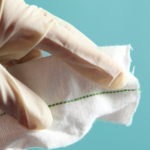treating bedsores: Symptoms, Stages, Diagnosis & Treatment
Bedsores, or pressure ulcers, are localized injuries to the skin and underlying tissue resulting from prolonged pressure, typically over bony areas like the heels and sacrum. They can vary from mild reddening to deep wounds that involve muscle and bone. Bedsores are a significant concern in healthcare, especially for bedridden or immobile patients.
Timely treatment of bedsores is essential to prevent severe complications, including chronic pain, infections, and increased mortality rates. Untreated bedsores can lead to prolonged hospital stays and higher healthcare costs, making proactive prevention and treatment vital for patient well-being.
This blog post will provide a comprehensive guide to treating bedsores, covering their causes, risk factors, and prevention strategies. We will explore effective treatment options, including wound assessment, debridement, and appropriate dressings. Additionally, we will highlight essential nursing considerations and provide case studies demonstrating successful interventions. The post will conclude with a summary of key points and a call to action for proactive management of bedsores.
Understanding Bedsores

Understanding bedsores, also called pressure sores, is crucial for preventing pressure injuries, especially for individuals who are immobilized due to medical conditions. These injuries occur when there is prolonged pressure against the skin, often in sensitive areas like the tailbone or ankle. When the body is unable to change position, the skin may suffer from a lack of blood flow, leading to skin and soft tissue injury. Over time, this pressure can cause affected skin to break down, resulting in clean open sores that can become life-threatening if infected. Symptoms and causes of pressure-induced skin and soft tissue injuries include vulnerable skin that may feel tender and is prone to cellulitis or sepsis if not properly managed.
To prevent and treat bedsores, it is vital to keep the skin clean and dry, avoiding exposure to urine and stool. Healthcare professionals recommend using saline solutions for wound cleaning and suggest strategies to help relieve pressure. Regularly change your position while in bed or a wheelchair can significantly reduce the risk of developing these harmful sores. The skin around existing sores should also be monitored for signs of infection. Understanding the diagnosis and treatment of pressure injuries is essential for effective wound healing and maintaining overall health.
Prevention Strategies

Regularly repositioning patients is crucial in preventing bedsores. This practice redistributes pressure from vulnerable areas of the skin, particularly over bony prominences such as the heels, sacrum, and elbows. By changing a patient’s position every two hours for those who are immobile, caregivers can significantly reduce the risk of pressure ulcers. Techniques such as using a 30-degree lateral position can minimize pressure on specific points, and implementing a schedule for repositioning helps maintain consistency and ensure that no area is subjected to prolonged pressure.
Specialized support surfaces, including pressure-relieving mattresses and cushions, play a vital role in preventing bedsores. These surfaces are designed to distribute weight evenly and reduce pressure on sensitive areas of the body. For example, alternating pressure mattresses use air cells that inflate and deflate to shift pressure away from high-risk areas, while foam and gel cushions provide additional comfort and support. The right support surface should be chosen based on the patient’s risk level, mobility status, and overall health condition to enhance comfort and minimize the risk of skin breakdown.
Maintaining skin integrity through proper skin care and hygiene practices is essential in preventing bedsores. Regularly inspecting the skin for signs of redness, irritation, or breakdown allows for early intervention. Gentle cleansing with mild soap and water helps keep the skin clean, while moisturizing products can prevent dryness and cracking. It’s also important to dry the skin thoroughly, especially in skin folds, to prevent maceration, which can contribute to skin breakdown. Employing barrier creams can protect vulnerable areas from moisture, friction, and shear forces.
Proper nutrition and hydration are fundamental components of skin health and play a significant role in preventing bedsores. A well-balanced diet rich in proteins, vitamins (especially vitamins A and C), and minerals supports skin integrity and enhances the body’s ability to heal. Adequate hydration helps maintain skin elasticity and prevents dryness, both of which are critical in keeping the skin healthy. Caregivers should monitor the nutritional intake of patients, particularly those who are bedridden or have limited mobility, to ensure they are receiving sufficient nutrients and fluids to support their overall health and skin condition.
Treatment Options for Bedsores
Bedsores, also called bedsores or pressure ulcers, occur when pressure on the skin affects blood flow to the skin, particularly in parts of the body that are in constant contact with a bed or wheelchair. If the skin may feel warm to the touch or develop a blister, it indicates that the skin and tissue are at risk. Pressure causes these sores with water and requires immediate attention to ease pressure on the affected area.
In the early stages, patients might may be able to treat bedsores by regularly shifting their position every 15 minutes to alleviate pressure on the area. It is essential to keep skin clean with a gentle cleanser and pat dry, and applying moisture barrier creams to protect the skin can help them heal. If the bedsore progresses, it can lead to a risk of infection and may even require surgery, as highlighted by the American Family Physician.
According to Berlowitz, addressing pressure-related issues early can significantly improve outcomes, as skin also plays a critical role in overall health. Pink or red skin indicates irritation, and if left unchecked, skin causes bedsores that can become severe. Proper care and preventive measures are vital for keeping safe patients and ensuring recovery from these painful conditions.
Nursing Considerations in Bedsores Management

Regular assessments are crucial in the management of bedsores, allowing nurses to monitor healing progress and identify any complications early. A standardized assessment protocol should include evaluating the wound’s size, depth, and stage, as well as assessing surrounding skin condition. Documentation of these assessments should include any signs of infection, such as increased redness, warmth, or purulent drainage. Frequent evaluations help in adjusting treatment plans and ensuring appropriate interventions are implemented to promote healing.
Educating patients and their families about bedsores and their management is essential for promoting awareness and compliance with care strategies. Nurses should provide comprehensive information on the causes of bedsores, the importance of regular repositioning, and proper skin care practices. Engaging patients and caregivers in discussions about nutrition and hydration can enhance their understanding of how these factors impact skin health. Providing written materials and resources can reinforce this education and empower families to take an active role in preventing and managing bedsores.
Thorough documentation in wound care is vital for ensuring continuity of care and facilitating communication among healthcare providers. Accurate records should detail the assessment findings, treatments applied, patient responses, and any changes observed in the wound’s condition. Documentation should also include patient education provided and their understanding of the care plan. This comprehensive approach not only helps track healing progress but also serves as a legal record of the care delivered, ensuring accountability and improving overall patient outcomes.
Conclusion to Effective Strategies for Treating Bedsores
In conclusion, effective strategies for treating bedsores focus on promoting healing and preventing further complications. One of the primary goals is to remove dead tissue, as this can hinder the recovery process and increase the risk of infection. Proper wound care involves applying a suitable bandage that not only protects the area but also maintains a moist environment conducive to healing.
Additionally, it is crucial to address the underlying causes of bedsores, which often occur due to pressure on specific areas of the body. Regular repositioning of patients can significantly reduce this pressure and promote blood circulation, thereby supporting the development of healthy skin. contact Vital Wound Care for more information.




